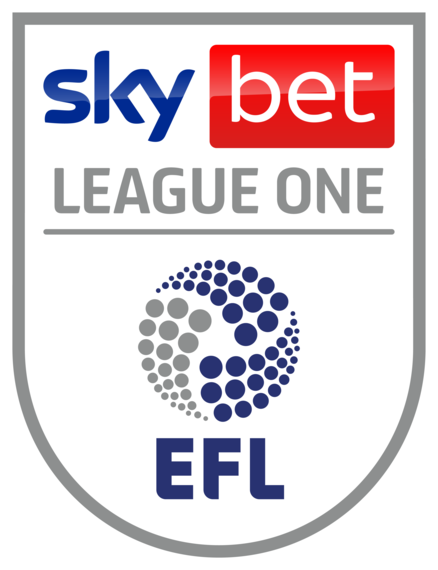JEZ SAYS
There could not have been a more appropriate player to score our first goal back in the Football League than Josh Coulson. Forget the fact that as a boy he stood on the terraces and grew up as a Cambridge United fan, more importantly, Josh is our longest serving player, a home grown product of our scholarship programme and a symbol of our work over the last eight years to re-establish a youth scheme following the decision by the club in 2005 to close it down. I know that Josh has great pride in representing the club and our academy; the feeling is mutual.
To put things into perspective, the reason the club closed the youth scheme in 2005 was to cut costs. At that time, the club was investing approximately £300,000-400,000 each year towards the running costs that were also funded by a grant the club also received from the football authorities of £138,000/season. Whilst we were in the Football Conference, this grant available to Football League clubs rose to £185,000/season. In the last eight years, we received nothing. Despite that fact, in those eight years which followed the re-birth of our current youth scheme in May 2006, we operated outside the financial auspices of the club, so it did not cost the club any money. They were the terms on which I agreed to operate when I joined the club in May 2006 and although the youth scheme operated within the Trust from 2011, it remained cost neutral to the club. I only point that out because the monies received this year from Luke Berry's transfer, Adam Marriott's move from Cambridge City to Stevenage (for which we had a sell on agreement) are profit for the club and not a return on significant investment as in the past with the likes of Michael Morrison and John Ruddy.
You will have seen us refer to EPPP regarding youth development. EPPP is the acronym for the Elite Player Performance Plan. It was initiated by the Premier League, and accepted by the Football League in October 2011, to raise standards within youth development. It replaced the old classification, whereby 40 clubs had academy status, with more stringent requirements for facilities, staff and investment than the remaining clubs, who were given a Centre of Excellence licence. In essence, apart from the odd exception like Crewe, the biggest clubs were an Academy and the smaller clubs were a Centre of Excellence. The mandatory investment for these clubs was minimal in comparison to the grant they received but they could hit the jackpot by producing a young player who if he was signed by another club, could command large fees in the open market or decided by a tribunal. There were lots of faults in the system but ultimately change came down to the fact that it was desired by the Premier League and since youth development is funded by the Premier League, change quickly followed in the guise of EPPP.
There are several fundamental changes. Firstly, the old "90 minute" rule was abolished meaning that clubs are no longer restricted to only signing players under the age of eighteen within this travelling time. Secondly, it created a four tier academy system, rather than the old classification as described above. The first three tiers cater for developing young players from 9-21 years old; the fourth tier is for clubs who only run Under 16 and Under 18 teams. The finances increase with each level, as do the staffing requirements and contact time with the players. For example, a Category 1 club have to invest a minimum of £1.65m each year to qualify for a grant of £825,000 and a Category 2 club must spend at least £500,000 to receive a matching grant. A Category 1 club would have a minimum of 18 full-time staff and an operating budget of £2.475m.
Thirdly, the way in which compensation is decided for young players is now predetermined with a formula that takes into account their length of time at the club and the category of club from which they are moving to and from. Clubs can also freely watch academy games, unlike the past where they had to receive permission, and whilst they should not speak to the players direct, they do know that they can sign any player for a fixed fee. And finally, the number of players that can be signed in each age group by a club has been relaxed.
These changes have led to the accusation that bigger clubs can stockpile players because they can sign them from anywhere, rather than previously a 90 minute catchment area, and for much smaller compensation than previously when there were no fixed fees. For smaller clubs, the risk/reward ratio has shifted significantly. From very little investment for potentially a massive return (if their best young player was bought by a bigger club, even before playing in the first team), it is now a significant investment annually for a far smaller potential return. And there is a huge commitment required to pass the audit. Clubs like Wycombe Wanderers and Yeovil Town have already withdrawn from EPPP.
If you look at the system rationally, it has raised the bar, it is beneficial for young players and like all changes, whilst everything isn't perfect, it does make clubs operate in the right way.
Until we own our facilities, including an indoor Astro, Category 3 is the highest classification that we could meet. That means spending a net minimum of £135,000/year to qualify for a grant of £270,000. The difference between our club and every other, is that our youth scheme developed to such an extent during our period outside the Football League receiving no funding, that it now operates as a financial model as well as a development model to be envied.
In essence, it means that we will generate sufficient income from all of our non EPPP activities, that we more than cover the amount the club is mandated to invest. That means we can appoint all the staff required to adhere to the EPPP criteria without cutting any corners, ensure that we are doing more than the bare minimum in order to aspire to being the best we can be and still create a significant six figure surplus for the football club. It gives us a financial advantage over our competitors of over £250,000 every season. In addition, it has given us the opportunity to create the structure of staff around the first team that has been so pivotal in supporting Richard and the senior professionals. It has been fundamental to our success.
So as well as the financial benefit to the club, it allows the likes of Matt Walker (Head of Sports Science and Academy Head of Education), Martin Davies (Goalkeeper Coach) and Alan Neilson (Lead Senior Professional Phase Coach) to combine roles within the first team and academy.
It is our club's USP. We have a plethora of talented young players within our academy, all of whom are potential assets to the club, and unlike the last time the club was in the Football League, where it was a drain on the club's finances, or the recent past in the Football Conference where it was cost neutral, the youth scheme now generates a financial surplus for the club.
We don't have the tough decision that many clubs at our level face: the value of a youth scheme v the cost of a youth scheme. We have the best of both worlds: a youth scheme that creates players, enhances our first team football staff and generates finance. It is a situation unique to our club.
So that might explain why the list of job roles at the back of the programme has suddenly expanded. We need to fill the following positions with suitably qualified staff: Academy Manager, Head of Coaching, Senior Professional Development Phase Coach, Professional Development Phase Lead Coach, Youth Development Phase Lead Coach, Foundation Phase Lead Coach, Head of Operations, Head of Recruitment, Senior Physiotherapist, Lead Sport Scientist, Head of Education, Welfare Officer, Academy Secretary. We then need two B licence coaches for every age group from Under 9's to Under 16's that are not taken by full-time staff. The fact that we have only had to recruit three new members of staff - Tom Donati, Adam Bridgeford and Chris Gibbons - is testament to how well we had developed the system and kept pace with EPPP developments despite our non league status. It is also why we were awarded a provisional licence by the Football League. They would only allow clubs to start receiving the funding if they felt we had a realistic chance of success. The fact that we have less than six months from when that decision was made until the audit shows how we impressed them with our current structure and immediate plans. They have been brilliant in their guidance and we know that whatever we have achieved to date, it will pale into insignificance to what we will have achieved if we can pass the audit in December.
On Wednesday, we held a technical board meeting. As well as key academy staff, this board comprises of Richard Money (Head Coach), Ben Strang (Chief Scout) and myself. Richard's experience and knowledge in youth development, most recently as academy manager at Newcastle United, is invaluable. So is Ben's contribution, which ensures the player profiles, assessments and coaching programme are integrated across the whole club, from our Under 9's to the first team. It was my vision in 2011 of how the football operation at our club should be run and this philosophy fits in totally with the expectations and demands of EPPP.
There has been some value for the pain of those nine years. In that time the club, eventually, reinvented itself. Central to that was a youth scheme which reflecting the history of the club, found a way to survive and flourish against all the odds. The challenge of passing an EPPP audit so soon after promotion is massive, but with the support of everyone at the club it can be achieved.
The short and long term future of the club depends on it.
Jez

